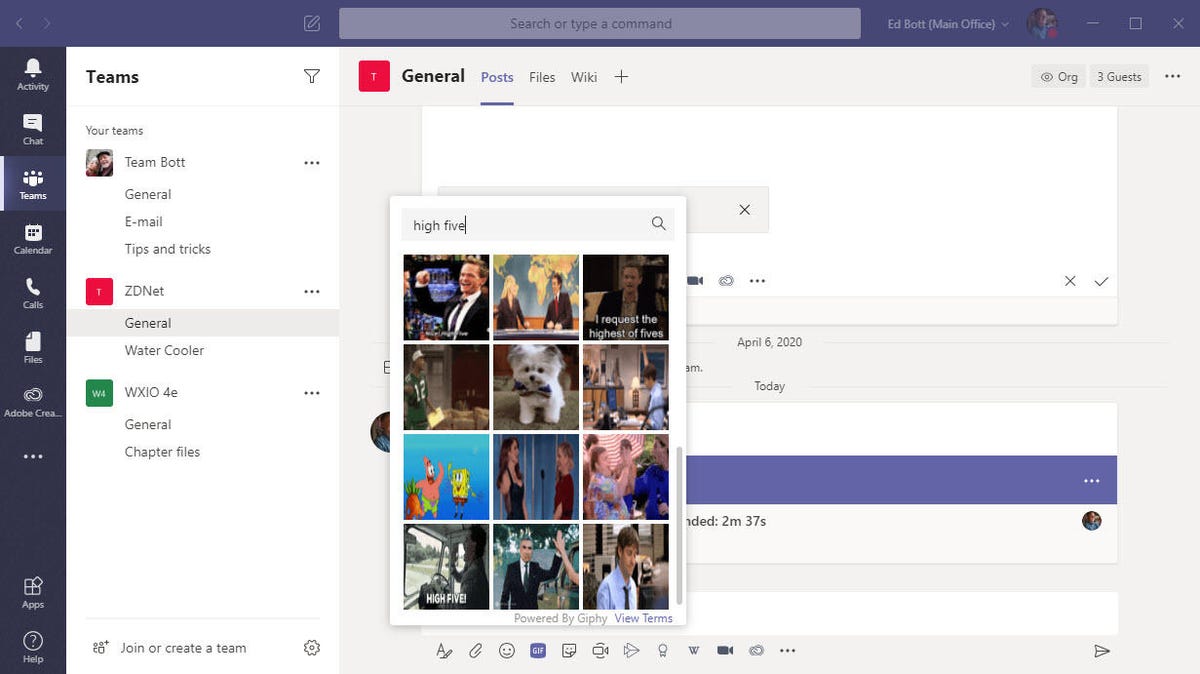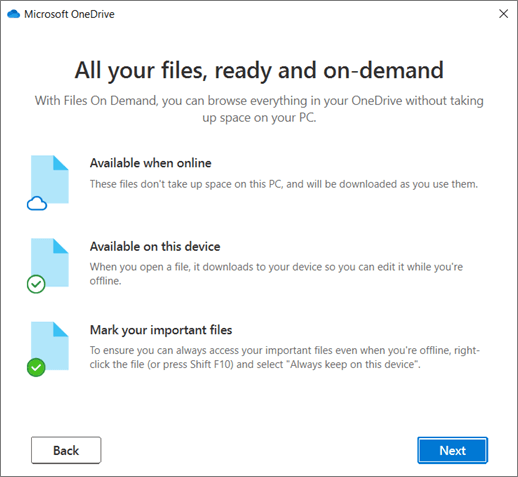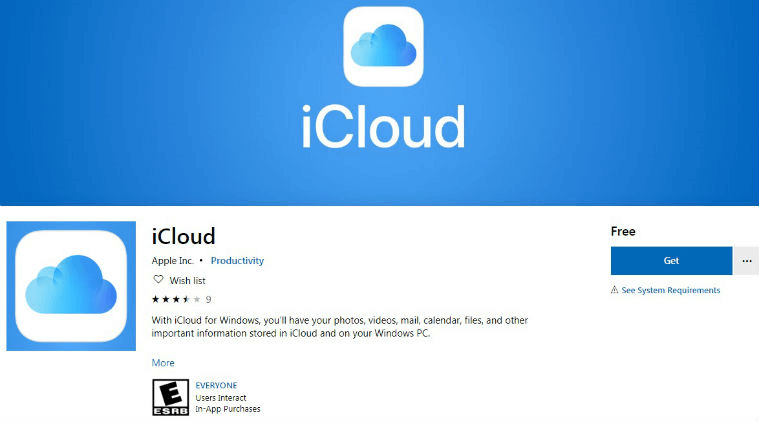- All My Documents Say Ineligible On Onedrive App Free
- All My Documents Say Ineligible On Onedrive App Download
- All My Documents Say Ineligible On Onedrive Apps
Oct 05, 2018 Method 7: Delete all files in the default file location. If you prefer the default location, you can try deleting all existing files in the default OneDrive folder to fix the not syncing issue. Note: To be on the safe side, make sure you have backed up all files in the default location, say, to a USB drive.
TUTORIAL: How to share iCloud Drive files I’ve also tried “dropbox”, no cigar. It happened when trying to create said folder via the Files app on my iPhone. On the Mac side, interestingly, you are allowed to create an iCloud Drive folder named “Dropbox” via the Finder but macOS prevents you from actually using it. She loves it – no more clunky VPN to access files on our server. BUT – she experienced an issue where OneDrive told her all her files were up-to-date, but some of the Folders in File Explorer continued to show the Status of syncing. Casting doubt on the whole syncing situation – Yes. We had to resolve this.
This article gives you an overview of how sync works in Microsoft OneDrive. It helps you understand the logic behind how information flows between applications, how the technologies work together, and how data is secured.
How information flows
The OneDrive sync app uses Windows Push Notification Services (WNS) to sync files in real time. WNS informs the sync app whenever a change actually happens, eliminating redundant polling and saving on unnecessary computing power.
Here's how it works:
A change occurs in Microsoft 365.
WNS alerts the sync app of the change.
OneDrive adds it to the Internal Server Changes Queue.
- Any metadata changes happen immediately, like renaming or deleting files.
- Downloading content also starts a specific session with the client.
Microsoft 365 has metadata pointers directing it through Microsoft Azure.
The changes are processed in the order they are received.
The previous OneDrive for Business sync app (Groove.exe) used a polling service to check for changes on a predetermined schedule. Polling can lead to system lag and slowness because it requires a lot of computing power. Using WNS is a significant enhancement.
All My Documents Say Ineligible On Onedrive App Free
Authentication protocols
The authentication protocols depend on which version of SharePoint you are using.

- SharePoint Server 2019 uses NTLM.
- SharePoint in Microsoft 365 uses FedAuth.
Syncing different file types
OneDrive handles sync differently depending on the type of file.

For Office 2016 and Office 2019 files, OneDrive collaborates directly with the specific apps to ensure data are transferred correctly. If the Office desktop app is running, it will handle the syncing. If it is not running, OneDrive will.
For other types of files and folders, items smaller than 8 MB are sent inline in a single HTTPS request. Anything 8 MB or larger is divided into file chunks and sent separately one at a time through a Background Intelligent Transfer Service (BITS) session. Other changes are batched together into HTTPS requests to the server.
The underlying technologies
The OneDrive sync app uses the following to sync files:
To find new changes and upload information:
https://<tenant_name, i.e. contoso>-my.sharepoint.com/personal/<user_contoso_onmicrosoft_com>/_api/SPFileSync/sync/<default document library ID GUID>/To download items:
https://<tenant_name, i.e. contoso>-my.sharepoint.com/personal/<user_contoso_onmicrosoft_com>/_layouts/15/download.aspxTo discover the sites and organizations a user can access:
https://odc.officeapps.live.com/odc/servicemanager/userconnected

Security and encryption
File chunks are stored in multiple containers in Azure, each of which is given a unique key. Each key is required to reassemble the complete file. There's also a separate master key encrypting each file chunk key, ensuring the data remain secure even when not moving.
Related topic
All My Documents Say Ineligible On Onedrive App Download
OneDrive for Business is very key in saving the overhead stress or buying local disc space and adding more flexibility to how files are handled and accessed.

Being a lightweight cloud computing platform, it tries to save the occupied disk space, ensures versioning is well managed while ensuring ready access to files from many devices to the account is connected.
Known Folder Move (KFM) which is a feature of both versions of OneDrive (Personal/Business) enables end-users to back up their Documents, Desktop, and Picture folder contents automatically to OneDrive so they can be synced across devices.
Every improvement as you know comes with their resultant downsides of messing up with another feature within the Office 365 ecosystem. The KFM feature tries to back up the contents of the Known folders (Pictures, Desktop, and Documents) to the cloud and saves you the disk space which will now further allow you to “Always keep on this device” or “Free up space” as you deem fit. This singular action won’t be favorable and will be catastrophic to your Developers, Data Analysts, Accountants, and UI/3D designers.
As we have established earlier, the Documents folder is part of the Backed up Known folders and we all know that the Document folder houses major application data and outputs within a Windows PC. If these program data, application directories, and Design Data are being backed up and Made “Cloud Only” files, the disaster after this enforcement will be very gracious as these key stakeholders will be pissed to either start looking for their files or spend hours and days to reorganize their files.
I will explain in clear terms how this change affects each Knowledge user below in bullet points:
- Software Developers – based on the earlier stated point of program files and IDE files being automatically saved within the Document folder (except when redirected), these data files and scripts will misbehave when synced to the cloud and called by either a function or a system process. For the fact that cloud files are secured both when at rest and in transit, the synced files on your PCs are usually locked and the file handler will always want to ensure you are working with an updated version. One way to go around this is to ensure your Dev files are on the “Always keep on this device” configuration.
- Data Analysts – the same thing applies for Data analysts as they majorly work with Spreadsheets and database files (Access files are problematic on OneDrive for Business) which usually gets in the way of OneDrive designed processes and practices. Say for example you have an Excel Spreadsheet that has External Linked Sheets or a VLooked up sheet on your Desktop which traditionally has the “C:users{your username}desktop” location, when Known folder move is turned on, the Physical address remains the same but the contextual address gets changed to “C:users{your username}OneDrive – {your Business name}Desktop” and this messes up with your spreadsheets and referenced files. One workaround to this is saving your Excel files in either your Videos folder or on the root of your C Drive.
- UI/UX Designers – for designers who work with Adobe Premier Pro and AutoCad designs, due to the file lock that exists within OneDrive synced directories, the files will be temporarily inaccessible to the application used for the design unless the files are on “Always keep on this device”. Also, the version control for Synced files will become an issue as these files might not have its versions saved to the cloud and you will have to rely on the in-app version store to recover changes.
- Accountants – I think the same thing that applies to Data Analysts will apply here as they predominantly work with spreadsheets and SPSS files. These also will experience access issues unless on the “Always keep on this device” or when relocated to an unsynced location for the best experience.
Support Suggestion: I understand it’s a Protection/Security need within an organization to prevent data loss that these changes are being made. However, it will be advised if this is given as a suggestion while explaining what the setting entails and allow each Knowledge user to decide how and when they sign up for the feature. Back up your Documents, Pictures, and Desktop folders with OneDrive
To-Do: I will appreciate it if you can share your experience with the file on demand forced-enforcement within your Organisation and how it affected your work processes so we can learn and offer workarounds.

Below is a video description of what Know Folders entails and how one can tweak them from the Registry editor
All My Documents Say Ineligible On Onedrive Apps
External Reference links;